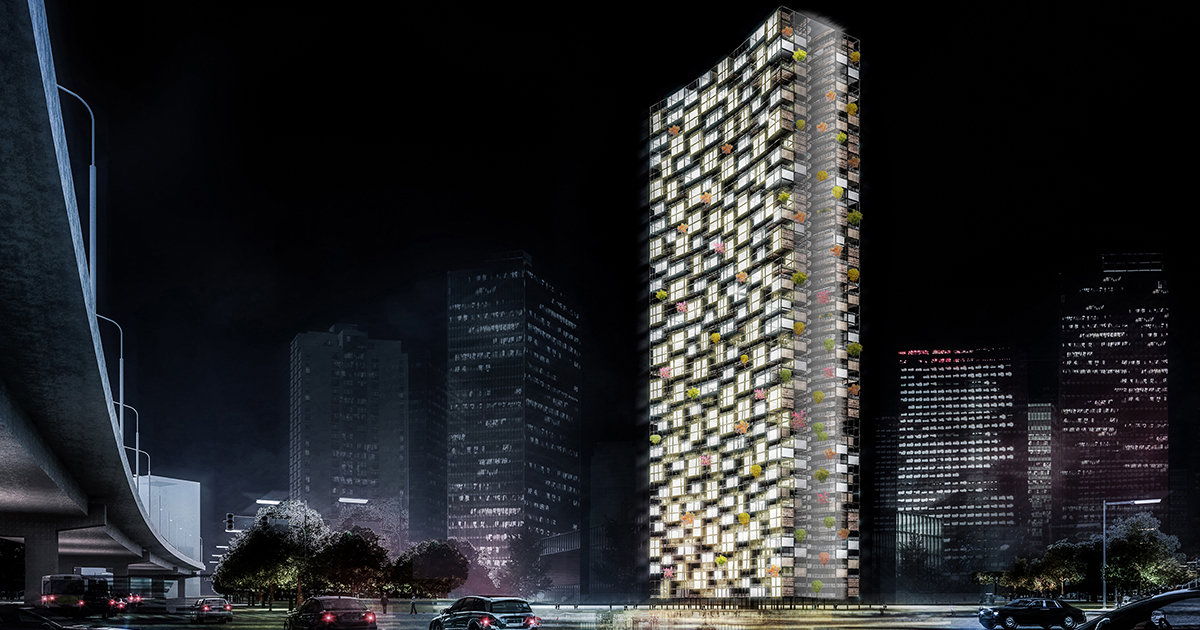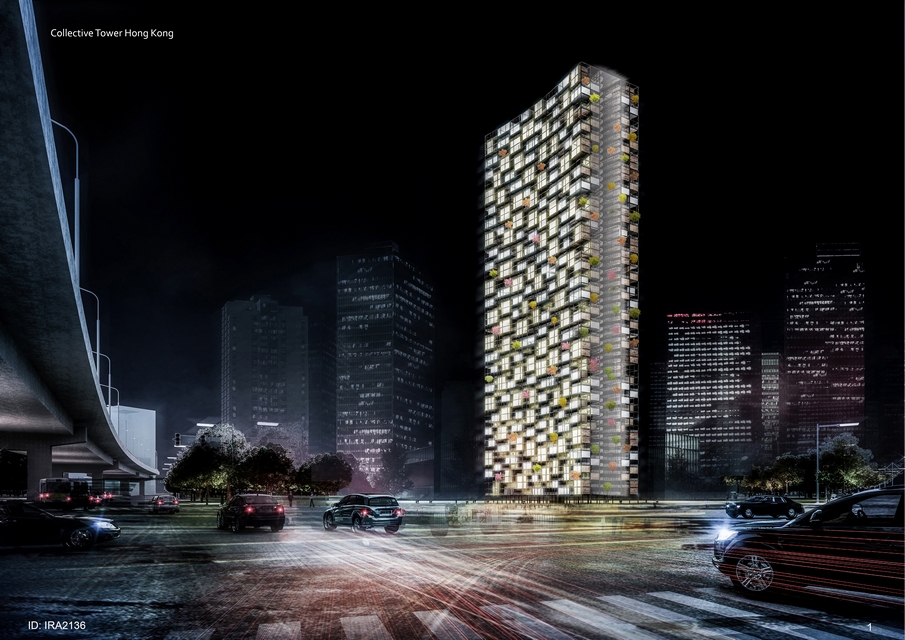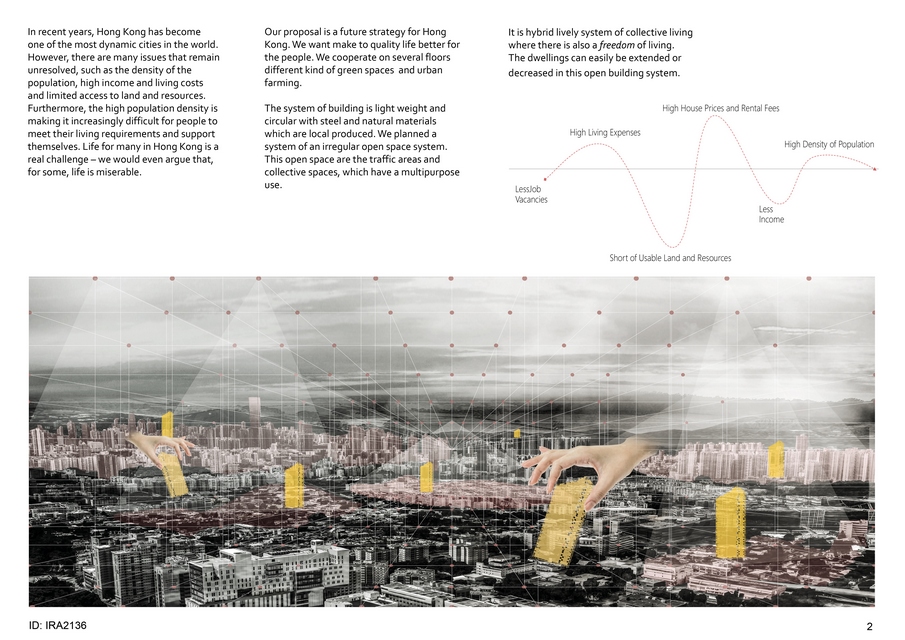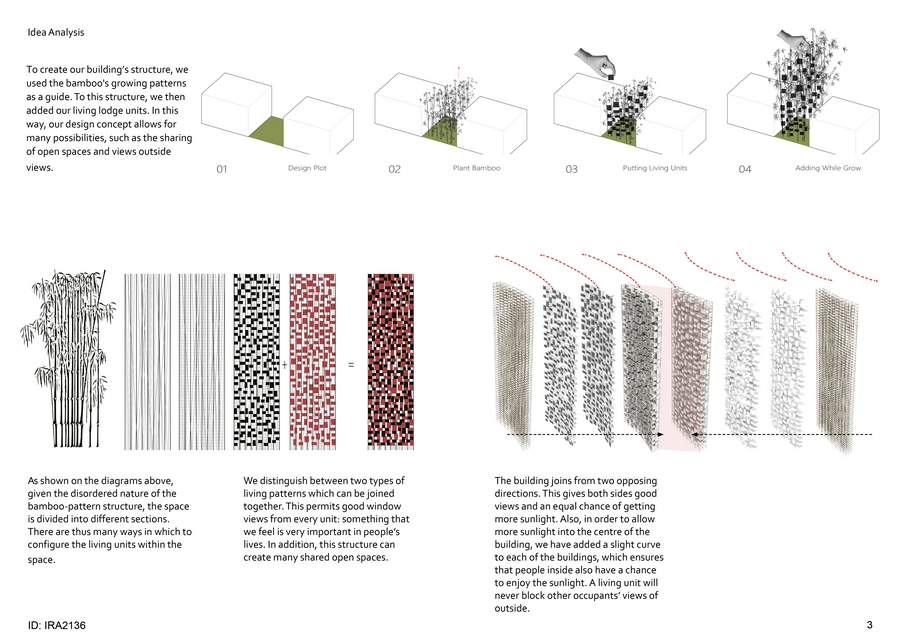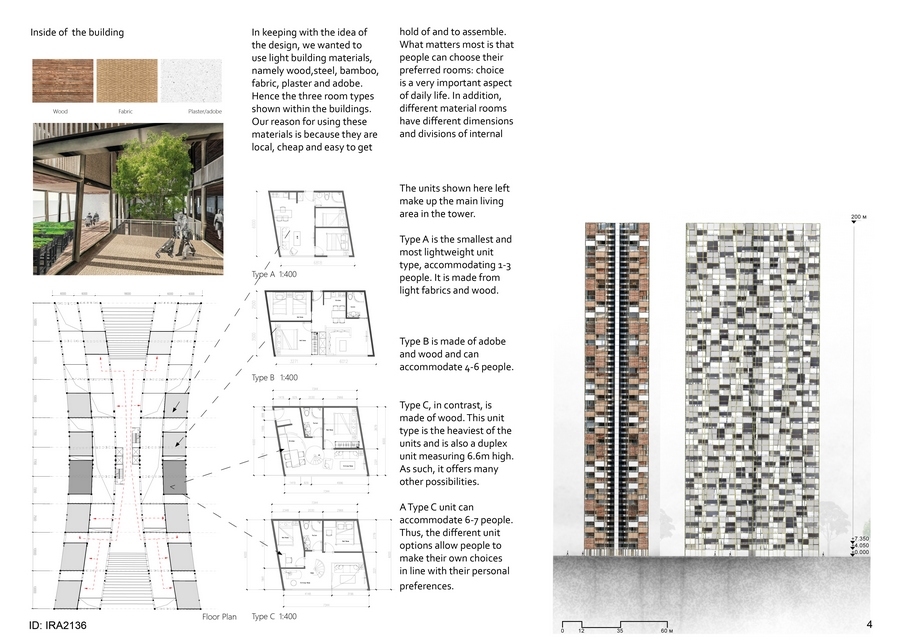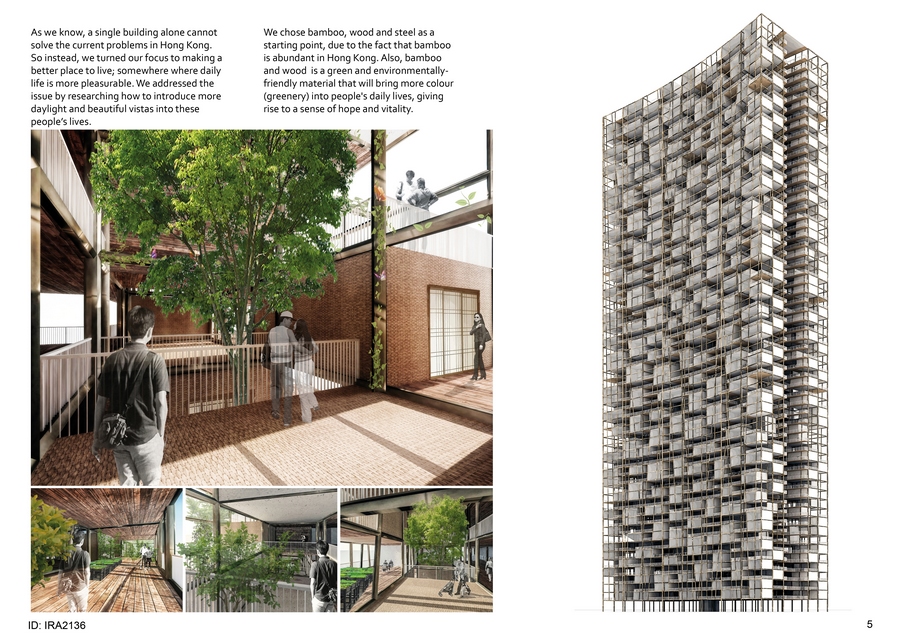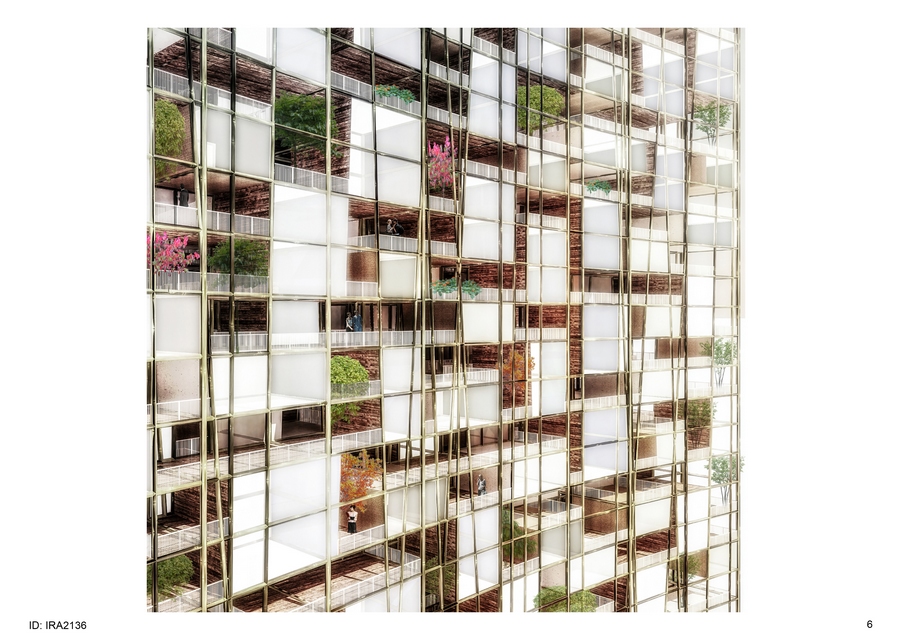Collective Tower Hong Kong | UArchitects | International Residential Architecture Awards 2021
UArchitects: Third Prize of International Residential Architecture Awards 2021. In recent years, Hong Kong has become one of the most dynamic cities in the world. However, there are many issues that remain unresolved, such as the density of the population, high income and living costs and limited access to land and resources. Furthermore, the high population density is making it increasingly difficult for people to meet their living requirements and support themselves. Life for many in Hong Kong is a real challenge – we would even argue that, for some, life is miserable.
Our proposal is a future strategy for Hong Kong. We want make to quality life better for the people. We cooperate on several floors different kind of green spaces and urban farming.
The system of building is light weight and circular with steel and natural materials which are local produced. We planned a system of an irregular open space system. This open space are the traffic areas and collective spaces, which have a multipurpose use.
It is hybrid lively system of collective living where there is also a freedom of living. The dwellings can easily be extended or decreased in this open building system.
Units design
The units shown here make up the main living area in the tower. Type A is the smallest and most lightweight unit type, accommodating 1-3 people. It is made from light fabrics and wood. Type B is made of adobe and wood and can accommodate 4-6 people.
Type C, in contrast, is made of wood. This unit type is the heaviest of the units and is also a duplex unit measuring 6.6m high. As such, it offers many other possibilities. A Type C unit can accommodate 6-7 people. Thus, the different unit options allow people to make their own choices in line with their personal preferences.
Inside the building
In keeping with the idea of the design, we wanted to use light building materials, namely wood, steel, bamboo, fabric, plaster and adobe. Hence the three room types shown within the buildings. Our reason for using these materials is because they are local, cheap and easy to get hold of and to assemble. What matters most is that people can choose their preferred rooms: choice is a very important aspect of daily life . In addition, different material rooms have different dimensions and divisions of internal space.
Idea analyzes
To create our building’s structure, we used the bamboo’s growing patterns as a guide. To this structure, we then added our living lodge units. In this way, our design concept allows for many possibilities, such as the sharing of open spaces and views outside views.
As shown on the diagrams below, given the disordered nature of the bamboo-pattern structure, the space is divided into different sections. There are thus many ways in which to configure the living units within the space.
We distinguish between two types of living patterns which can be joined together. This permits good window views from every unit: something that we feel is very important in people’s lives. In addition, this structure can create many shared open spaces.
The building joins from two opposing directions. This gives both sides good views and an equal chance of getting more sunlight. Also, in order to allow more sunlight into the center of the building, we have added a slight curve to each of the buildings, which ensures that people inside also have a chance to enjoy the sunlight. A living unit will never block other occupants’ views of outside.
As we know, a single building alone cannot solve the current problems in Hong Kong.
So instead, we turned our focus to making a better place to live; somewhere where daily life is more pleasurable. We addressed the issue by researching how to introduce more daylight and beautiful vistas into these people’s lives.
We chose bamboo, wood and steel as a starting point, due to the fact that bamboo is abundant in Hong Kong. Also, bamboo and wood is a green and environmentally-friendly material that will bring more color (greenery) into people’s daily lives, giving rise to a sense of hope and vitality.

Project Details
Firm
UArchitects
Project Name
Collective Tower Hong Kong
Architect/Designer
Misak Terzibasiyan
International Residential Architecture Awards Category
Housing More than 5 Floors Concept
Project Location
Hong Kong
Team
UArchitects
Country
The Netherlands
Photography ©Credit
©UArchitects


